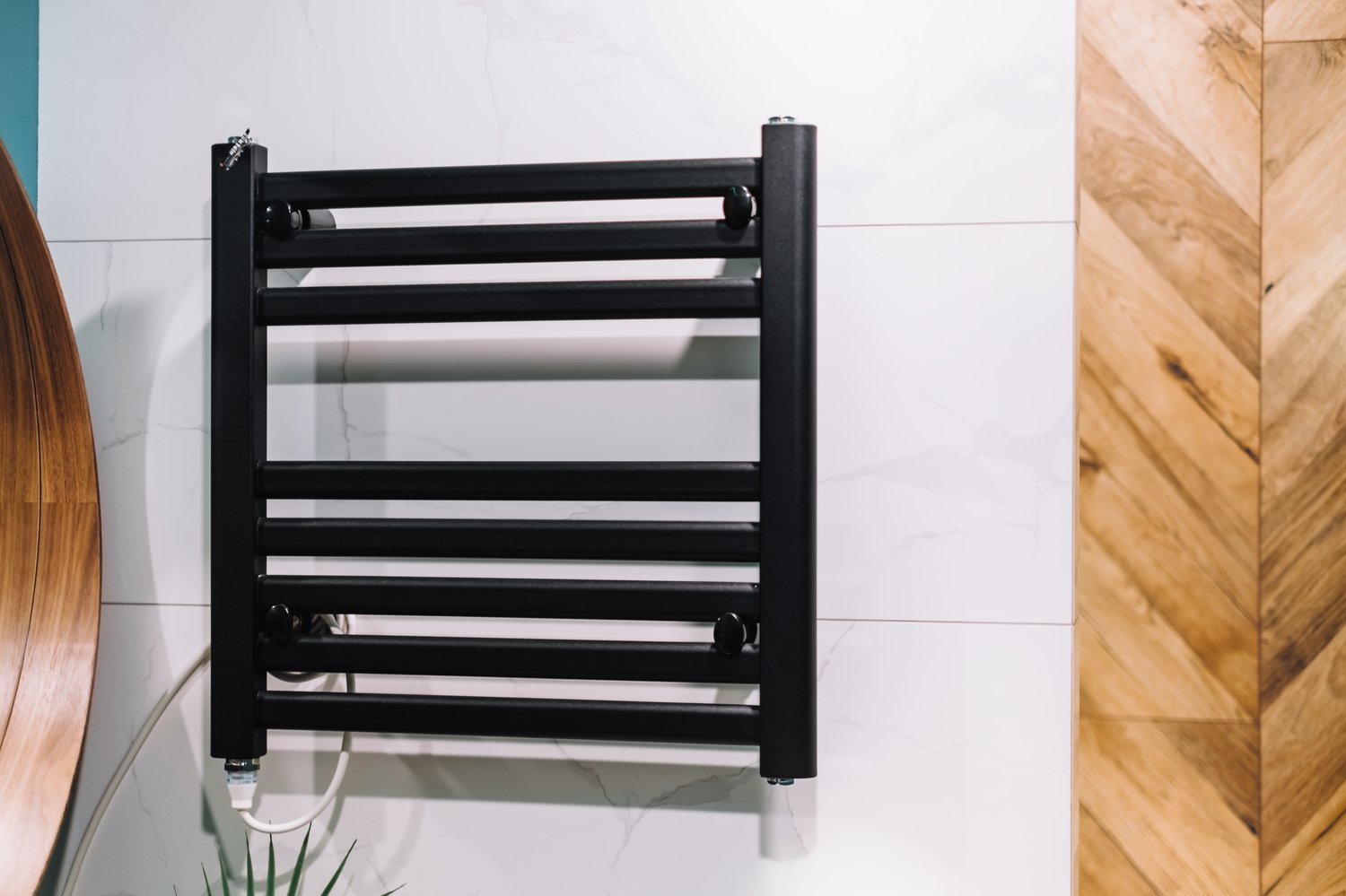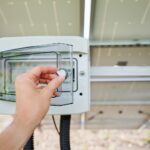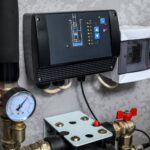Imagine stepping out of a warm shower, only to be greeted by a disappointingly cold towel. The frustration of an electric towel warmer not heating can be enough to dampen any morning routine. Understanding the reasons behind this malfunction could save you from unnecessary hassle and expense. In this guide, we dive into the common culprits like element and timer control issues that could be affecting your towel warmer’s performance.
- Uncover what internal and external factors could be causing your towel warmer to stop generating heat.
- Learn how to diagnose potential faults with the heating element, including recognizing signs of failure.
- Understand the crucial role of timer controls and how their misconfiguration might impact heating functionality.
- Explore additional factors like power supply inconsistencies or installation errors that could lead to problems.
This article offers practical insights that empower you to address these issues, whether through simple troubleshooting or seeking professional help, ensuring your towel warmer operates seamlessly once more. Dive in to resolve your warmer woes and regain that cozy towel experience.
Understanding Electric Towel Warmer Not Heating: Element and Timer Control Problems
Electric towel warmers are a convenient and luxurious addition to any bathroom, providing warm towels that enhance comfort. However, when a towel warmer fails to heat effectively, it can be both frustrating and puzzling. One of the primary areas to explore when troubleshooting is the internal components and external control settings.
Internally, the most significant component responsible for heating is the heating element. Over time, this element can wear out or face technical issues, leading to inadequate or no heating output. Externally, the timer controls are pivotal in managing the operation of the towel warmer. Incorrect settings or malfunctioning controls can disrupt the warming cycle, resulting in performance issues.
Understanding the interplay between these components and setting adjustments is crucial. Malfunction of any of these elements can lead to the warmer not reaching the desired temperature or not heating at all. Identifying the root cause requires a systematic approach, assessing each component, and examining the overall configuration of the towel warmer system.
Element Issues: Diagnosing Heating Problems
The heating element is the core of any electric towel warmer, and diagnosing element issues is often the first step in troubleshooting heating failures. A common sign of a faulty heating element is uneven heating or a complete lack of warmth. Over time, elements may suffer from corrosion, burnout, or breakage due to constant thermal cycles and usage.
To diagnose issues with the heating element, a continuity test is a reliable approach. Using a multimeter, one can check for continuity across the element. If the multimeter registers no continuity, it indicates a break in the element, confirming it’s the source of the problem. It’s imperative to ensure the towel warmer is disconnected from the power source before testing to guarantee safety.
Other visible signs of element issues include discoloration on the surface or unusual noises during operation. Regular maintenance and care can help in identifying these issues early, preventing costly replacements. Should a problem with the element be detected, replacement rather than repair is usually recommended for safety and efficiency.
Timer Control Problems: Adjusting and Verifying Settings
Electric towel warmers are often equipped with timer controls to optimize energy consumption and convenience. However, improper settings or faults in the timer can directly impact the towel warmer’s heating functionality. Understanding how to adjust and verify these settings can significantly improve performance.
First, consult the user manual for your specific towel warmer model to identify the recommended settings. Manufacturers often provide default settings that ensure optimal performance. If the warmer is not heating as expected, it may be helpful to reset the timer controls to these defaults before making any further adjustments.
Once reset, carefully calibrate the timer. Check if it is set to the correct time and ensure that automatic on/off cycles are correctly programmed according to your usage habits. Make sure the power supply is stable when you test your settings to avoid inaccurate readings.
Timer malfunctions could arise from outdated or defective units. If adjustments don’t resolve heating issues, examine the timer unit itself. Loose connections or damaged wiring within the control panel can disrupt heating cycles. For persistent problems, consider replacing the timer with a compatible model, or consult a professional electrician for an advanced inspection.
Other Potential Causes of Electric Towel Warmer Not Heating: Element and Timer Control Problems
In addition to element and timer control issues, other factors can contribute to an electric towel warmer not heating correctly. Power supply issues are a common culprit; ensure that the unit is properly plugged in and that the outlet is functioning. Use a multimeter to check for voltage inconsistencies, which can affect performance.
Installation errors should also be considered. Incorrect installation can lead to operational faults, so verifying that your warmer was correctly mounted and wired per manufacturer instructions is critical. An installation manual or professional guidance may be necessary if there’s any doubt.
Regular maintenance can prevent many heating issues. Dust and debris can accumulate over time, causing obstructions within the heat element or other components. Periodically cleaning the unit according to the manual’s guidelines can enhance its efficiency and lifespan.
External factors like environmental temperature or humidity often influence performance, especially where warmers are used in bathrooms. Ensure the room is appropriately sealed and insulated to maintain an adequate ambient temperature for the unit’s operation.
While some issues might appear straightforward to fix, remember that dealing with electrical systems carries inherent risks. In complex cases or if you are unsure about any aspect of the repair process, seeking professional assistance is advisable to guarantee both safety and functionality.
DIY vs. Professional Repair: When to Seek Expert Help
Addressing issues with an electric towel warmer, such as heating element problems or timer control malfunctions, can sometimes be straightforward enough for a DIY enthusiast. However, distinguishing between simpler tasks and those that require professional intervention is crucial for safety and effective repair.
For minor issues, such as checking the power supply or adjusting the timer settings, a homeowner with basic electrical knowledge may attempt a DIY solution. Before proceeding, always ensure that the power is turned off to avoid electrical shock.
Many towel warmer problems stem from element failures or intricate timer control issues. In such cases, it involves dealing with internal components that might require specialized tools and a precise understanding of the system. It is recommended to consult a certified electrician for these types of repairs to ensure that all safety standards are met.
Knowing when to seek expert help is vital. If the problem persists after basic troubleshooting or if there’s any indication of a serious electrical fault, such as unusual noises or burning smells, it’s wise to err on the side of caution. Engaging a professional not only ensures that the issue is resolved effectively but also preserves the lifespan of your appliance.
For more complex undertakings, like installing or replacing electrical components, hiring a licensed electrician becomes necessary. Professional electricians possess the expertise to identify and solve issues that might not be apparent to someone without formal training.
Ultimately, the decision between DIY and professional repair should balance personal skill level with the risks involved. Prioritize safety and rely on professional guidance whenever unsure about handling electrical installations. Remember, while DIY efforts can be rewarding, the expertise of a professional can safeguard both your appliance and your household.
Frequently Asked Questions about Electric Towel Warmers Not Heating
Why is my electric towel warmer not heating?
Check if the power supply is connected and the circuit breaker is not tripped. Then, inspect the heating element and timer control settings.
How do I know if the heating element is faulty?
Test the element for continuity using a multimeter. If there’s no continuity, the element may need replacement.
Can a malfunctioning timer control affect towel warmer performance?
Yes, incorrect timer settings can prevent the towel warmer from operating as intended. Ensure the timer is set and calibrated properly.
What are common power supply issues for towel warmers?
Loose connections, tripped breakers, and faulty wiring can affect power supply. Ensure all connections are secure and conduct a wiring check.
Should I attempt to repair my towel warmer myself?
Basic checks like confirming power supply can be done DIY, but electrical repairs should be handled by professionals for safety.





